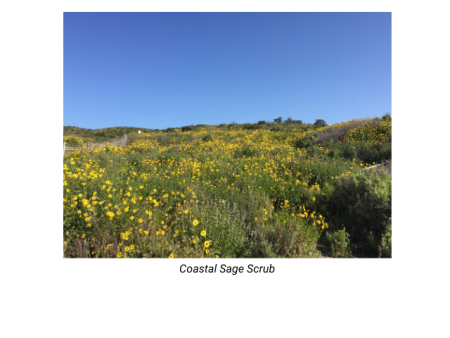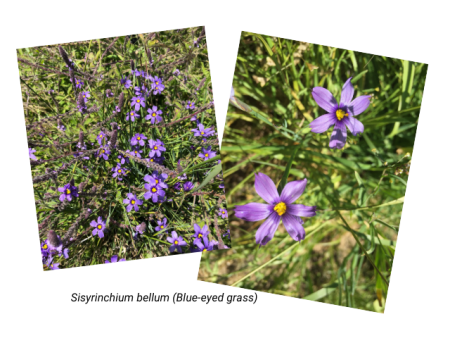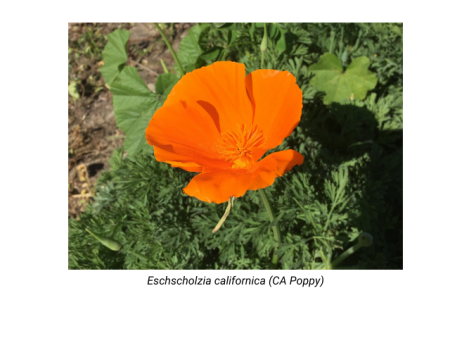A critical component of OCWR’s mission is “to protect the environment.” This takes many forms, from mitigating landfill impacts on the surrounding neighborhoods to helping threatened and endangered species grow and protecting archeological and paleontological resources. The habitat areas at Prima Deshecha and Frank R. Bowerman are prime examples of environmental stewardship and protection.
Environmental benefits of the habitat include:
- Protecting threatened and endangered species
- Providing quality native habitat and corridors for local wildlife
- Eliminating non-native, invasive plants that disrupt native ecosystems and often create fire hazards (i.e. black mustard)
Prima is home to more than 200 acres of habitat, including coastal sage scrub, native grasslands, and riparian areas. Prima’s newest habitat area is called Segunda Deshecha. Approximately 20-acres of Segunda’s total 100 acres is a grassland mitigation area, where in 2020 crews planted approximately 1,000 grass plugs of various California species and placed native seed mixes.

CA native grassland species include:
|
CA native grass seed mix include:
|
- Nassella pulchra (Purple needlegrass)
- Nassella lepida (Foothill needlegrass)
- Bromus carinatus (CA brome)
- Elymus triticoides (Beardless wild rye)
- Elymus condensatus (Giant wild rye)
|
- Nassella pulchra (Purple needlegrass)
- Nassella lepida (Foothill needlegrass)
- Bromus carinatus (CA brome)
- Elymus triticoides (Beardless wild rye)
- Eriophyllum confertiflorum (Golden yarrow)
- Eschscholzia californica (CA poppy)
- Festuca (Vulpia) microstachys (Small fescue)
- Ericameria palmeri var. pachylepis (Palmer’s goldenbush)
- Melica imperfecta (Small-flowered melica)
- Sisyrinchium bellum (Blue-eyed grass)
|

At the Frank R. Bowerman Landfill, crews installed 80 new container plants on the upland portions of the banks of Bee Canyon Wash and 200 more, with drip irrigation, to the areas adjacent to the Crew Quarters, water tanks and new Fire Pump House areas in 2020. The efforts focused on species with a native, low-water usage theme to continue with the existing landscaping.
Container plants on the upland portions of the banks of Bee Canyon Wash include:
|
Species surrounding the Crew Quarters include:
|
- Willow cuttings
- Coyote bush
- Blue elderberry
- Mulefat
|
- Big berry manzanita
- Bush mallow
- Holly leaf cherry
- Heart-leaf Penstemon
- Flannelbush
- Coast yucca
- Shaw’s agave
- Laurel Sumac
|
OCWR has restored more than 380 acres throughout the County; from coastal sage scrub, riparian and wetland habitats to California native grasslands and many coast live oak trees. These restored areas have been placed under a conservation easement to be protected as open space in perpetuity. They are legally protected to help native wildlife and plant species grow. What we do today affects future generations for years to come. For instance, in October 2020 the Silverado Fire burned through the landfill in similar fashion to the 2007 Santiago Fire. Vast areas of the landfill burned, however OCWR is confident that native grasslands and coastal sage scrub will recover and grow back quickly without much human intervention. Such native plant species have underground root crowns that allow them to re-sprout after a fire. Other native species are “fire followers,” annual plants species that germinate readily in the spring following a fire. With sufficient rainfall, spring 2021 should show signs of post fire recovery, as was evident in the spring of 2008, following the 2007 Santiago Fire.
